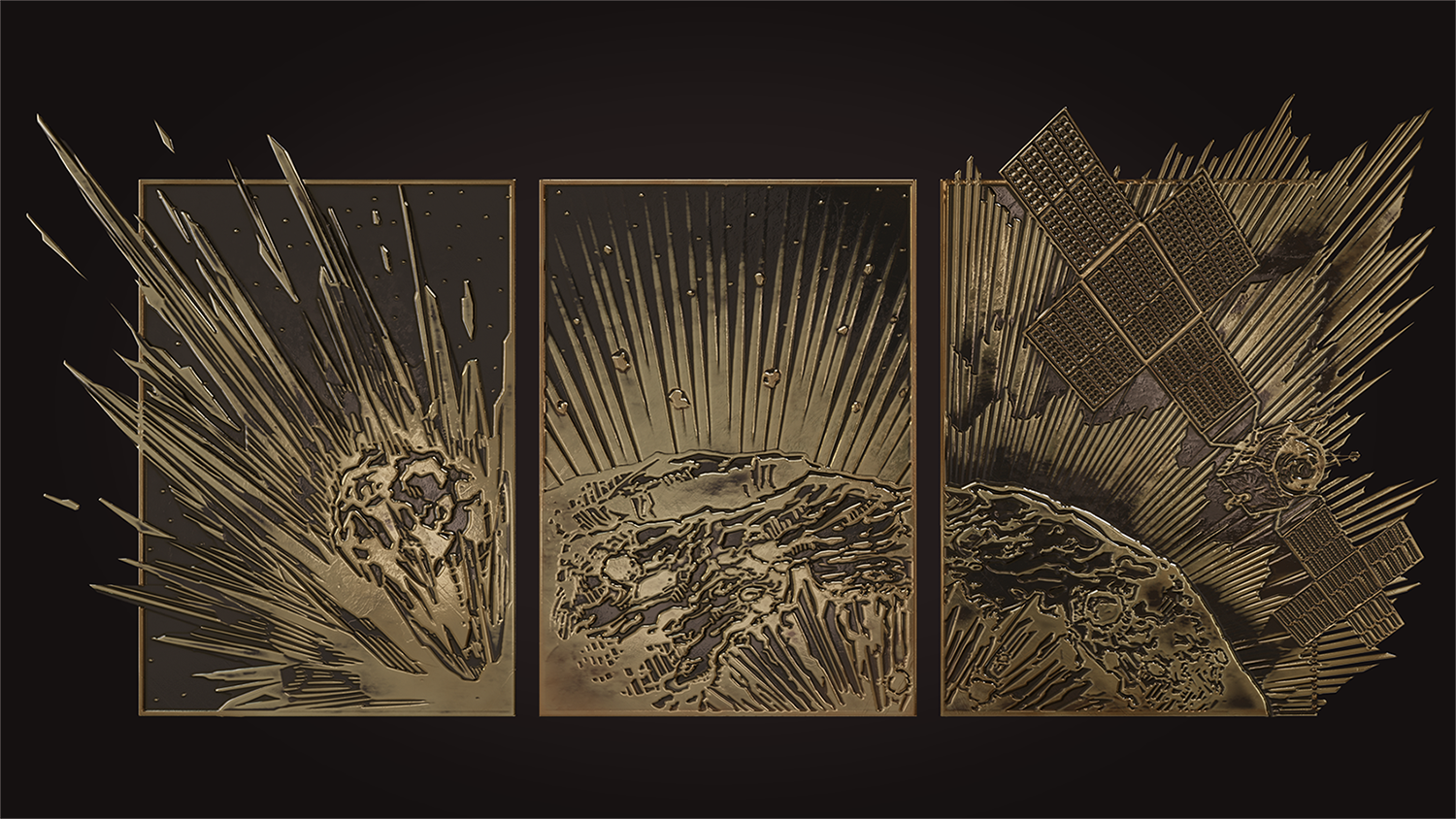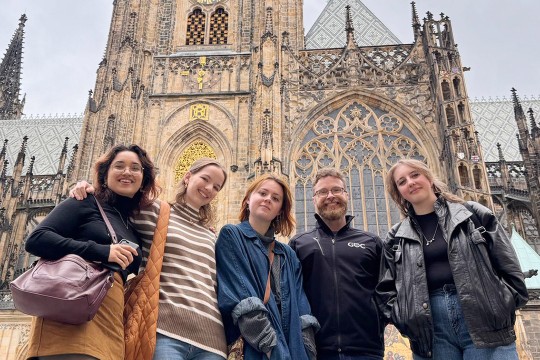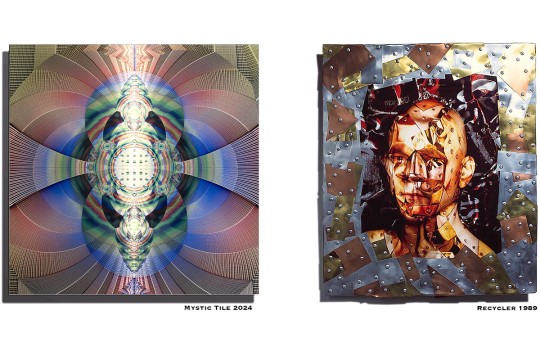Student on a mission to merge art with science for NASA
Paige Manley '24 (3D digital design), Visiting Lecturer Jennifer Indovina and Paige Contorno ’24 (3D digital design) at Johnson Space Center, where they and a wider team demonstrated their NASA astronaut training device integrating wearable sensors and a virtual reality game.
When NASA’s Psyche spacecraft launched in October, it marked the start of a six-year journey to an asteroid between Mars and Jupiter.
While the public waits for that culminating moment, Paige Manley ’24 (3D digital design) is using her creativity to spawn a better understanding of the mission.
Manley is going through NASA and Arizona State's Psyche Inspired internship program this fall. Chosen college students are charged with making creative works that educate about the Psyche space mission, NASA’s effort to reach and study a unique, metal-rich asteroid of the same name.
In a space known for innovative science and technology, Manley is demonstrating the value of art as an aid to science.
As a result of her internship, Manley is also collaborating with a multidisciplinary senior design team from the Kate Gleason College of Engineering to make supporting visuals for a separate project related to the Psyche mission.
“That’s one way art works really well with science is that it can explain complicated processes that makes it simpler for the general public to understand,” Manley said.
Paige Manley '24
For Manley's first project as a Psyche Inspired intern, she made a metal engraving-inspired piece representing the Psyche asteroid's past (left panel), present (middle) and future (right).
Related: Learn more about Manley's "Story of Psyche" project
Over the last year, Manley has been engaged in multiple NASA-sponsored programs for which she has made substantive creative contributions to missions and research. Her commitment to traversing multidisciplinary projects is emblematic of Rochester Institute of Technology’s focus on merging technology, the arts and design.
“I didn’t realize there was so much of an overlap between art and science and it’s just interesting to see different perspectives,” Manley said.
In the spring, Manley was on a multidisciplinary team of engineering, game design and development and 3D digital design students that built a NASA astronaut training device integrating high-tech wearable sensors, a balance board and a virtual reality game. The technology — designed to help astronauts maintain balance and cognitive functions in space and on earth following extended space travel — was presented to staff and health specialists of NASA’s Astronaut Strength Conditioning Rehab Laboratory at Johnson Space Center.
Manley was the creative mind behind many assets found in the Indiana Jones-inspired VR game, called “Starcheologist” — from the mine cart rails, crates and other elements to animating aquatic dangers like alligators and hippos in a river raft level.
Paige Manley '24
Some of the assets Manley created for the "River Run" level of "Starcheologist."
Manley also designed a logo, in the spirit of a NASA mission patch, representing RIT’s multi-year role in NASA’s Moon to Mars eXploration Systems and Habitation Academic Innovation Challenge.
RIT’s faculty and student researchers began developing its game-design training system for NASA in 2021 with funding from a grant written by Kathleen Lamkin-Kennard, associate professor in the Department of Mechanical Engineering. Jennifer Indovina ’06, ’07 (electrical engineering, MBA), visiting lecturer in 3D digital design, later worked with Lamkin-Kennard and Elizabeth DeBartolo, associate professor in the Kate Gleason College of Engineering, to add a creative layer to the research.
“When you have long timelines, you need really good art, visualization and communication to say, ‘This isn’t going to happen for a while but when it does, everybody get excited,’” said Indovina, also a guide for the multidisciplinary senior design program. “Art will always be one of the most powerful tools to showcase what science and technology are good for.”
Manley and Paige Contorno ’24 (3D digital design) were recruited to complete independent studies, working closely with Indovina and the other engineers and game designers. The design students ensured assets they generated met NASA’s standards for a game that was both challenging and visually engaging for astronauts.
“That added a very dynamic change,” Indovina said. “Astronauts have to go through all this training. So how do we gamify it? How do we make it fun? How do we make it visual?
“It feels like we got a really big win with Paige, who brings the passion into understanding that, for this science to work, there is a human component and humans are attracted to art. Art is our visual language.”
Paige Manley '24
Manley designed a badge, in the spirit of an official NASA mission patch, for RIT's innovative efforts to build a training device for NASA astronauts.
RIT’s relationship with NASA and its Moon-to-Mars objectives has continued with another grant centered on integrating a similar gamification training system meant for long-term space habitation.
“This couldn’t happen without RIT,” Indovina said. “You have cross-college partnerships and these students get meaningful collaboration that does something of real value.”
Manley’s lifelong interest in science drew them to an environment like RIT, where opportunities to marry artistic and scientific disciplines are around every corner.
In contributing to NASA’s space exploration, Manley has discovered new career pathways.
“It means a lot to be able to work on these projects,” Manley said. “I love doing this. I am always learning new things and that’s something I really enjoy.”










